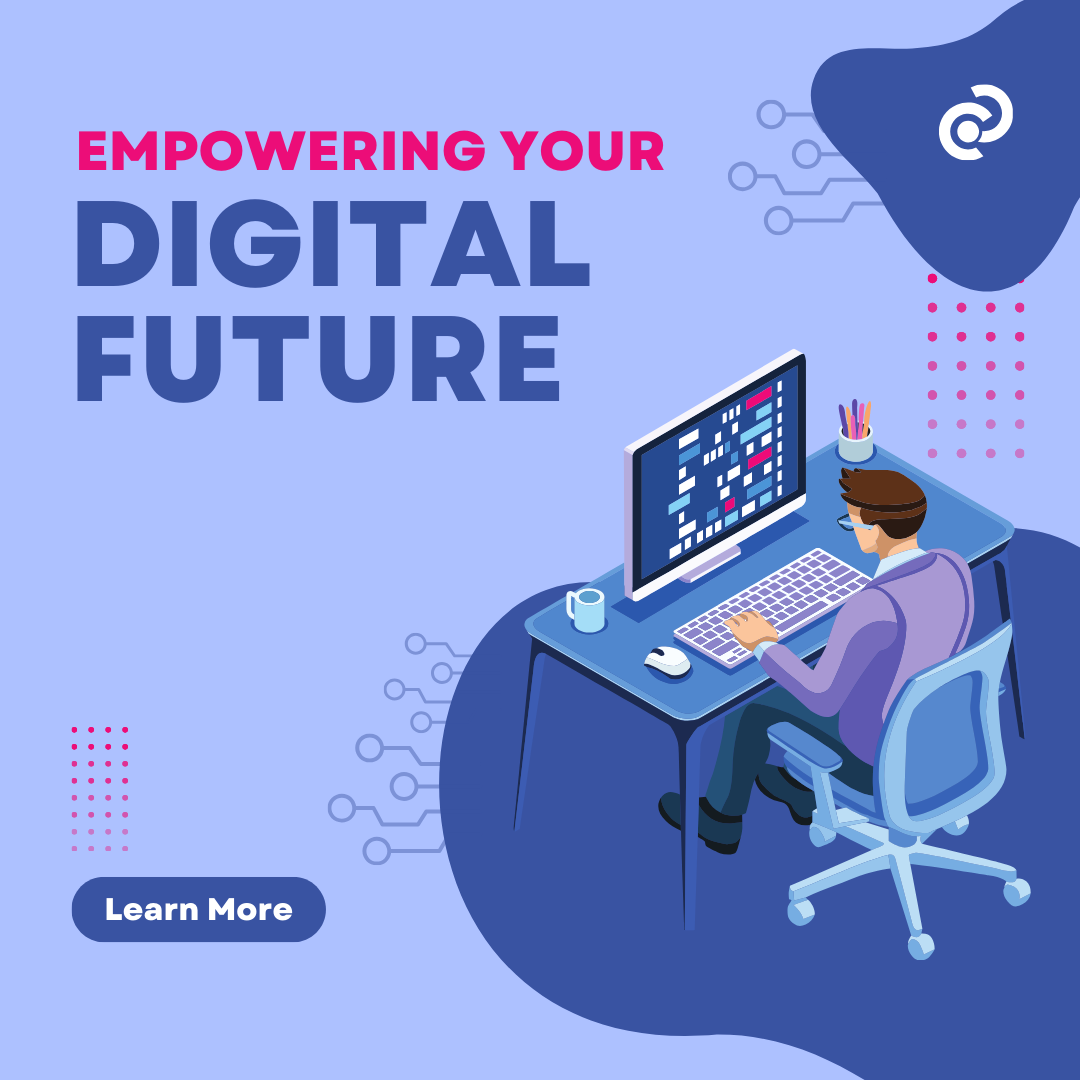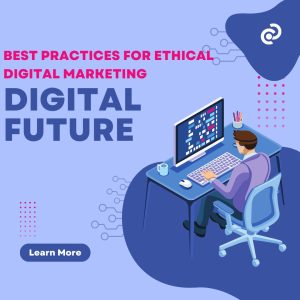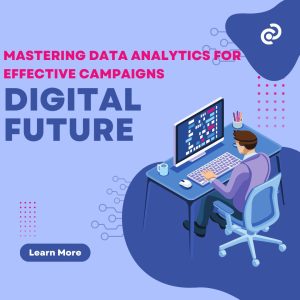The Evolution of Digital Marketing: Past, Present, and Future
Digital marketing has undergone a dramatic transformation since its inception, evolving alongside advancements in technology, changing consumer behavior, and the emergence of new platforms. From the early days of the internet to the age of AI-powered marketing and immersive technologies, digital marketing has continually adapted to the needs of businesses and their audiences. This article explores the evolution of digital marketing, examining its journey from the past to the present and looking ahead to the future.
The Past: The Birth of Digital Marketing (1990s – Early 2000s)
Digital marketing’s roots can be traced back to the early 1990s, with the creation of the World Wide Web. The internet offered a new way for businesses to reach consumers, but digital marketing as we know it today didn’t truly begin until the late 1990s.
1. Emergence of Websites and Email Marketing
The first significant shift in marketing occurred with the development of business websites. Companies realized that having an online presence could help them reach new customers beyond traditional geographical limits. Simple, static websites became essential for businesses to establish credibility and provide contact information. Early websites were basic and primarily used for informational purposes, with little interactive or e-commerce functionality.
Email marketing also began in the 1990s. It was one of the first channels used for digital marketing and still remains a powerful tool today. Early email marketing campaigns were primarily focused on direct communication, offering promotions, discounts, and newsletters to customers who subscribed. Although rudimentary by today’s standards, email marketing helped companies build a direct connection with their audience.
2. Search Engines and SEO
In the mid-1990s, search engines like Yahoo and AltaVista started to gain popularity, followed by the launch of Google in 1998. With the rise of search engines, businesses began focusing on search engine optimization (SEO), a strategy aimed at improving their website’s visibility in search engine results pages (SERPs). Early SEO was relatively simple, involving keyword stuffing and link building to rank higher. However, it laid the groundwork for more sophisticated SEO practices in the years to come.
3. Paid Search and Banner Ads
In the early 2000s, Google AdWords (now Google Ads) introduced paid search advertising, marking a turning point for digital marketing. Paid search allowed businesses to pay for placement on search engine results pages based on keywords, providing a way to reach potential customers at the very moment they were searching for relevant products or services. Additionally, the popularity of banner ads began to rise. These graphic-based ads were placed on websites, attempting to capture the attention of users who were already engaged in online content.
The Present: The Age of Social Media and Content Marketing (2010s – 2024)
As the internet continued to evolve, so did digital marketing. The 2010s brought the rise of social media platforms, mobile marketing, and the increasing sophistication of data-driven marketing strategies.
1. The Rise of Social Media Marketing
Social media platforms like Facebook, Twitter, LinkedIn, Instagram, and later TikTok, became essential tools for digital marketing. Social media marketing allowed businesses to connect with customers on a more personal level, sharing content that resonated with their audience, engaging in conversations, and responding to customer inquiries. Social media also introduced the concept of social proof, where customer reviews, likes, shares, and comments could influence the purchasing decisions of others.
Businesses began to invest heavily in creating high-quality content for social platforms. This content was more than just promotional material; it was designed to inform, entertain, or inspire. Influencer marketing also emerged during this period, where businesses partnered with individuals who had large social media followings to promote their products or services. This strategy leveraged the trust influencers had built with their audience, making it a highly effective method for reaching new customers.
2. Content Marketing and Video Marketing
Content marketing took center stage as businesses recognized the value of providing valuable, relevant content to attract and retain customers. Blogs, eBooks, case studies, and videos became common tools in a digital marketer’s arsenal. Video marketing, in particular, grew significantly with the rise of platforms like YouTube and Facebook. Video became an essential format for delivering content that was both engaging and shareable, helping businesses build stronger relationships with their audience.
3. Search Engine Algorithm Changes and SEO 2.0
SEO evolved considerably, with search engines, particularly Google, becoming more sophisticated. Google’s algorithms, such as Panda, Penguin, and Hummingbird, focused on rewarding websites with high-quality, original content rather than sites that simply optimized for keywords. As a result, SEO strategies became more focused on user experience, site speed, mobile responsiveness, and content relevancy. Businesses had to adapt to these changes by creating content that was not only SEO-friendly but also valuable to their audience.
4. The Advent of Mobile Marketing
The widespread adoption of smartphones and tablets brought about the importance of mobile marketing. Businesses began focusing on optimizing websites for mobile devices, ensuring that their websites and advertisements were accessible and functional on smaller screens. Mobile apps became an important tool for customer engagement, and SMS marketing emerged as a method for reaching customers directly on their mobile phones.
5. Data-Driven Marketing and Personalization
The availability of large amounts of consumer data revolutionized digital marketing. With tools like Google Analytics, marketers gained deeper insights into customer behavior, enabling them to segment their audiences more effectively and target them with personalized content and ads. Marketing automation tools allowed businesses to send tailored messages at specific times, improving customer engagement and conversion rates.
The Future: AI, Automation, and Immersive Technologies (2025 and Beyond)
Looking ahead, digital marketing is poised for further innovation, with the emergence of artificial intelligence (AI), augmented reality (AR), virtual reality (VR), and even more advanced data analytics tools.
1. Artificial Intelligence and Machine Learning
AI will play an increasingly central role in the future of digital marketing. From predictive analytics that anticipate customer needs to chatbots that provide instant customer support, AI is transforming how businesses interact with customers. Machine learning algorithms can analyze vast amounts of data to create highly personalized marketing campaigns that are both efficient and effective.
2. Automation and Programmatic Advertising
Marketing automation will continue to evolve, allowing businesses to create hyper-targeted campaigns that are automatically triggered by specific customer actions. Programmatic advertising, which uses AI to buy and place ads in real-time, will further streamline the process of reaching the right audience at the right time with the right message.
3. Immersive Technologies: AR and VR
Augmented reality and virtual reality are set to reshape the digital marketing landscape. Brands can use AR to allow customers to virtually try products before purchasing, while VR can offer immersive brand experiences. As these technologies become more accessible and widespread, marketers will have more tools to engage their audience in new and exciting ways.
4. Voice Search and Smart Devices
The rise of voice search will continue to impact SEO strategies. With the popularity of voice-activated devices like Amazon Alexa, Google Assistant, and Apple’s Siri, marketers will need to optimize their content for voice queries, which tend to be more conversational and question-based.
5. The Metaverse and Digital Advertising
The metaverse, a virtual world where users interact in real-time, is becoming a new frontier for digital marketing. Companies will explore ways to advertise and engage consumers within virtual environments, creating immersive experiences that blend the digital and physical worlds.
Conclusion
From the early days of email marketing and static websites to the current era of social media, mobile marketing, and AI-powered personalization, digital marketing has come a long way. As we look to the future, we can expect even more exciting advancements, including immersive technologies and deeper integration of AI. For businesses, staying ahead of these trends will be key to maintaining a competitive edge and continuing to connect with an increasingly digital-savvy audience. The evolution of digital marketing is ongoing, and its future promises to be as dynamic and transformative as its past.



📈 A great topic that highlights how for a digital marketing From traditional banner ads and email marketing to today’s AI-driven, personalized campaigns—this evolution shows how technology continues to shape the way brands engage with customers. It’s exciting to imagine what the future holds with innovations like voice search, metaverse, and data privacy trends leading the way.
“Fantastic read! The article does an excellent job tracing the evolution of digital marketing—from early banner ads and email blasts to the current era of AI-powered tools and immersive technologies. I especially appreciated how it emphasizes the importance of adapting to changing consumer behaviors and technological advances.
This kind of insight reinforces the value of pursuing an online digital marketing course </a where you not only learn foundational strategies but also stay updated on the latest trends and tools shaping the industry.”
“Fantastic read! The article does an excellent job tracing the evolution of digital marketing—from early banner ads and email blasts to the current era of AI-powered tools and immersive technologies. I especially appreciated how it emphasizes the importance of adapting to changing consumer behaviors and technological advances.
This kind of insight reinforces the value of pursuing an online digital marketing course </a where you not only learn foundational strategies but also stay updated on the latest trends and tools shaping the industry.”